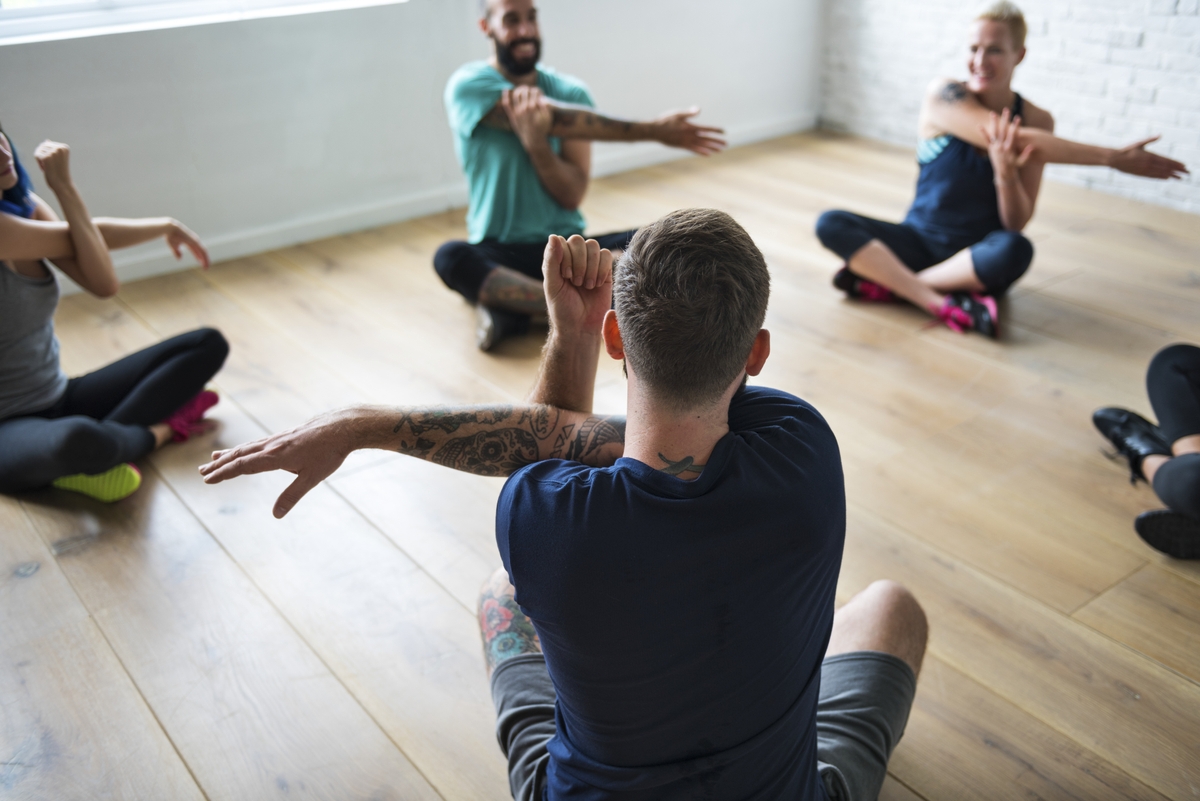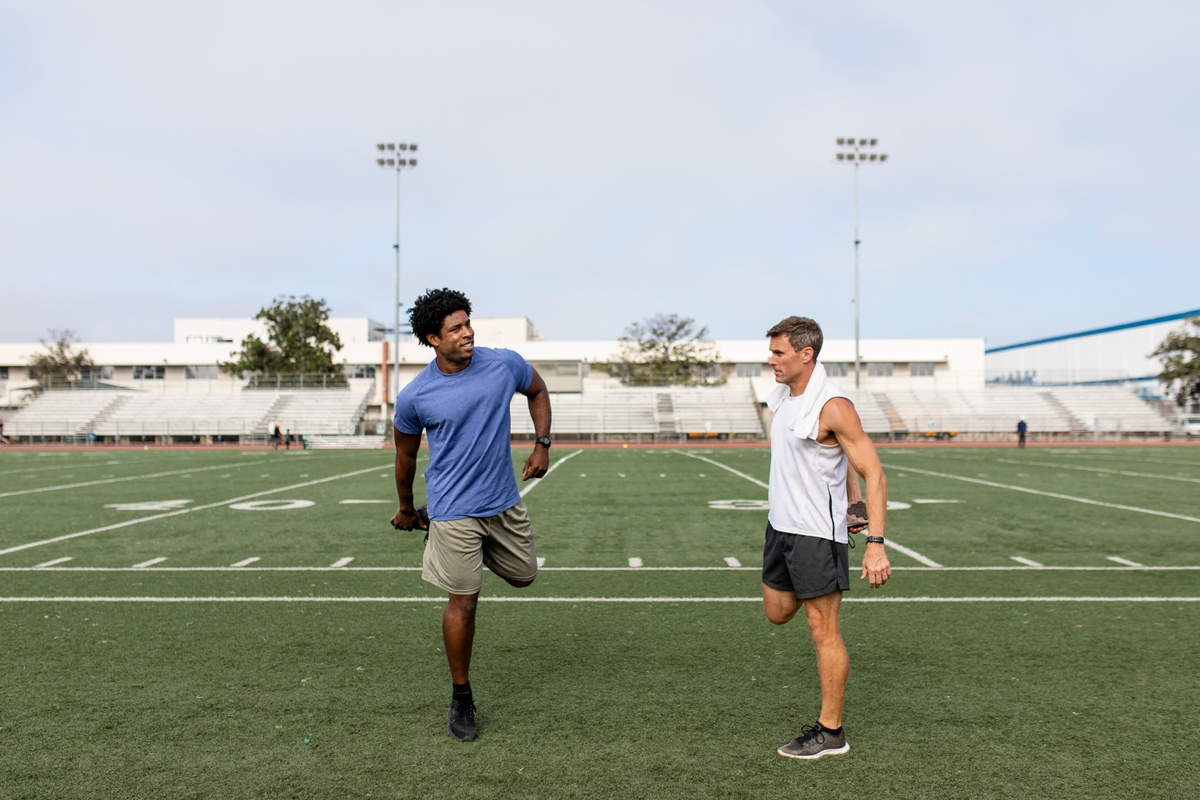
Why Does Stretching Feel So Good?
Stretching is a fundamental activity that some people engage in regularly. It may be a simple morning routine, a post-workout ritual, or just reaching for something high up on a shelf. But have you ever stopped to wonder why stretching feels so remarkably good? The sensation of stretching transcends mere physical relief. It often brings about a profound sense of relaxation and pleasure. Some of us find this experience incredibly satisfying. In this extensive blog geared toward stretching, we will dive deep into the science behind why stretching feels so good, both the physiological and psychological intricacies and the physical benefits that contribute to this delightful experience.
The Physiology of Stretching
Muscle Lengthening and Tension Release
When you stretch a muscle, you initiate a complex series of physiological responses that result in muscle lengthening and tension release. Muscles are comprised of fibers that can become tense and contract due to several factors. Physical activity like stress or poor posture contributes. Stretching serves as a powerful tool to counteract this tension. As you stretch, you stimulate specialized muscle receptors known as muscle spindles. These receptors relay signals to the spinal cord and brain. These signals trigger a reflex that promotes muscle relaxation and elongation. The subsequent release of tension leads to an unmistakable sensation of relief and ease throughout your body.
Improved Blood Circulation
Stretching is not just about the muscles. It also has a remarkable impact on blood circulation throughout the body. As you engage in stretches, blood flow to the stretched muscles surges. This facilitates the delivery of essential nutrients and oxygen. This heightened circulation not only nourishes your muscles but also aids in the removal of accumulated waste products and toxins. The improved blood flow contributes to an overall feeling of refreshment and well-being. It feels like a rejuvenating inner massage.
Release of Endorphins
Stretching exerts an influence on your body’s chemical makeup. This design releases endorphins. These natural neurochemicals are often referred to as the body’s built-in painkillers and mood elevators. The act of stretching prompts your body to release endorphins. This release interacts with receptors in your brain. The outcome is a perceptible reduction in pain perception and a surge of pleasure and relaxation. This phenomenon is reminiscent of the euphoria experienced after a satisfying workout.

The Psychological Aspect of Stretching
The Mind-Body Connection
Stretching provides a unique opportunity to foster a profound connection between your mind and body. As you engage in a stretching routine, you become acutely attuned to your body’s intricate sensations. These sensations affect your breath, and the fluidity of movement. This heightened mindfulness serves as a form of meditation, granting respite from the constant demands of daily life. By cultivating this mind-body connection during stretching, you not only alleviate stress and anxiety but also unlock your inner tranquility.
Stress Reduction
Stress often manifests physically as muscle tightness and discomfort. Regular participation in stretching routines offers an effective countermeasure to the physical repercussions of stress. Through stretching, you engage the parasympathetic nervous system that is responsible for the “rest and digest” response. This engagement translates to a lowered heart rate, reduced blood pressure, and an overall soothing effect on both body and mind. As you stretch, you invite a sense of peace that helps unravel the knots of stress, leaving you feeling remarkably lighter.
Positive Sensory Stimulation
Stretching is a sensory experience that engages an array of receptors within your muscles, tendons, and skin. These receptors transmit signals to your brain, culminating in a symphony of sensations that can be remarkably pleasurable. The combination of physical feelings and the ensuing relief of tension establishes a feedback loop that contributes to the satisfying feeling associated with stretching. This resembles a gentle embrace for your entire body.

The Physical Aspect of Stretching
Increased Flexibility and Range of Motion
One of the primary physical benefits of stretching is the enhancement of flexibility and range of motion. Regular stretching routines gradually elongate muscles and tendons, allowing them to stretch further before reaching a point of discomfort. This increased flexibility is particularly valuable in daily activities. The benefit of sports athletes enjoy greater freedom of movement, reduces the risk of injury, and enhances overall functional performance.
Improved Posture
Stretching plays a pivotal role in promoting good posture. Muscles that are tight or imbalanced can pull the body out of alignment. This will lead to poor posture. Engaging in stretches that target muscles responsible for maintaining proper posture. Some of these predominant muscles are in the chest, shoulders, and hips. These muscle groups can help alleviate imbalances and contribute to an upright and balanced posture.
Injury Prevention
Regular stretching is a vital component of injury prevention. When muscles are flexible and supple, they are less likely to become strained or injured during physical activities. Stretching helps maintain muscle integrity, reduces muscle imbalances, and improves muscle coordination. All of these contribute to a decreased risk of injuries.
Muscle Recovery and Soreness Reduction
After an intense workout, muscles can become sore and fatigued due to micro-tears in muscle fibers. Gentle stretching post-exercise can aid in muscle recovery. Stretching after exercise promotes blood flow to the muscles, which delivers essential nutrients and accelerates the removal of metabolic waste products. This can help alleviate muscle soreness and expedite the healing process.
Enhanced Athletic Performance
Athletes often incorporate stretching into their training routines to enhance their athletic performance. Dynamic stretching, which involves moving the muscles through their full range of motion, can help activate muscles and prepare them for action. Static stretching, on the other hand, can help improve muscle flexibility, allowing athletes to execute movements more efficiently and with reduced risk of strain.
Joint Health
Stretching also contributes to joint health. By maintaining the flexibility and integrity of the connective tissues surrounding joints, facilitate strong joint health. When muscles are tight, they can exert pressure on adjacent joints. This will potentially lead to discomfort and limited range of motion. Regular stretching helps keep muscles and tendons flexible. By doing this it will reduce strain on joints and support their overall health.
Muscle Balance
Stretching can aid in achieving a balance between opposing muscle groups. Daily activities and exercise routines emphasize certain muscle groups. Other groups not affected by the activity end up neglected. This imbalance can lead to postural issues and compromised joint stability. By incorporating stretching routines that target both agonist and antagonist muscle groups, you can maintain better muscle balance and alignment.
Improved Blood Flow and Nutrient Delivery
Stretching promotes enhanced blood circulation not only to muscles but also to surrounding tissues and organs. Improved blood flow facilitates the delivery of essential nutrients and oxygen to these areas. This supports their overall health and function. Increased nutrient supply contributes to tissue repair and overall vitality.
While stretching’s psychological benefits are noteworthy. The physical aspect is equally significant and impactful. Through regular stretching, you can cultivate increased flexibility, enhance range of motion, improve posture, prevent injuries, expedite muscle recovery, and elevate athletic performance. It is important to understand the advantages of stretching; both physical and psychological. Once you accept this notion about stretching, you will experience improved well-being, vitality, and a more harmonious connection between your body and mind. So, the next time you engage in a rejuvenating stretch, remember that you are not only nurturing your psyche but also fostering a healthier and more vibrant physical self.

4 Tips for Maximizing the Feel-Good Effect of Stretching
Warm-Up Before Stretching
Prioritize a thorough warm-up before embarking on your stretching routine. Cold muscles are more prone to injury. Warm-up helps increase blood flow, preparing your muscles for deeper stretches. Engage in light cardiovascular activities such as brisk walking or cycling to enhance blood circulation and elevate your body temperature.
Embrace Breath Awareness
Integrate deliberate and controlled breathing into your stretching practice. Consciously taking deep breaths while stretching. This facilitates relaxation, amplifies oxygen delivery to your muscles, and cultivates a state of calmness. Focus on synchronizing your breath with each movement. Allow your body to harmonize with your breath’s rhythm.
Gradual Progression
Adopt a gradual and progressive approach to your stretching routine. Begin with gentle stretches, holding each position for a few seconds before gradually intensifying the stretch. This methodical progression enables your muscles to adapt and relax more effectively. This will ensure a safer and more enjoyable stretching experience.
Cultivate Mindful Awareness
As you engage in your stretching routine, center your attention on the sensations coursing through your body. Zero in on the stretch’s impact on the targeted muscle groups. Observe how your body reacts to each movement. By nurturing this mindful awareness, you enhance the connection between your mind and body, intensifying the pleasurable sensations of stretching.
Post Stretch Thought
Stretching transcends its physical attributes. It encompasses a harmonious fusion of physiological responses and psychological benefits. You create the mind body connection between the release of muscle tension and enhanced blood circulation, to the liberation of endorphins. Stretching crafts, a multidimensional experience that leaves us feeling not just relaxed, but profoundly rejuvenated. We can slowly unravel the intricate science behind stretching. As we gain more knowledge, we gain a deeper appreciation for the profound impact it wields on our holistic well-being. The next time you partake in a satisfying stretch, savor the intricate sensations, and recognize that you are nurturing both your body and spirit. This happens one gentle stretch at a time.

